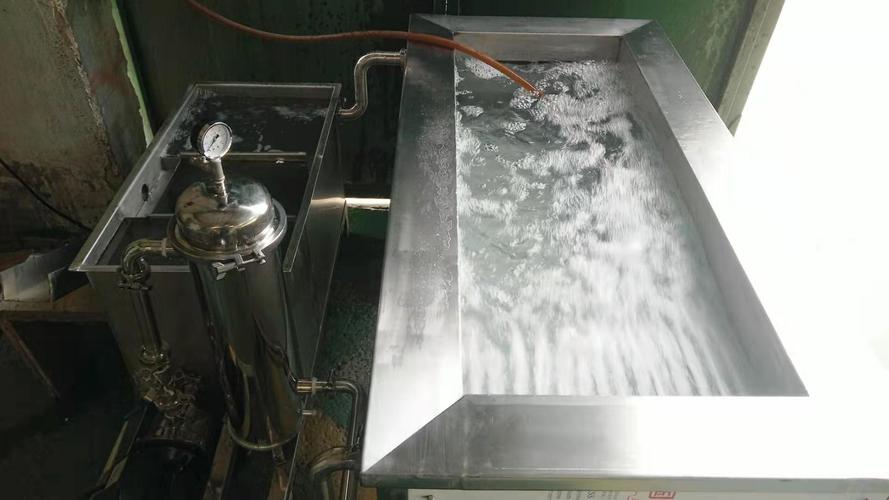Precision is at the heart of CNC machining. However, after milling, turning, or drilling, machined components often contain residues—cutting fluids, metal chips, polishing compounds, and microscopic debris—that can affect assembly, surface quality, and even final performance.
Traditional cleaning methods like manual scrubbing, solvent soaking, or high-pressure spraying can be labor-intensive and inconsistent. Ultrasonic cleaning has emerged as a superior alternative—offering fast, thorough, and non-destructive cleaning for CNC machined parts.
1. What Is Ultrasonic Cleaning?
Ultrasonic cleaning is a non-contact cleaning process that uses high-frequency sound waves (typically 20–80 kHz) transmitted through a liquid medium to remove contaminants from surfaces and cavities of machined parts.
The process relies on a phenomenon called cavitation—the formation and collapse of microscopic bubbles generated by alternating high and low-pressure sound waves in the cleaning solution.
When these bubbles implode, they create localized shockwaves and microjets that gently dislodge dirt, oil, and debris from even the most intricate geometries—without damaging the substrate.
2. How the Ultrasonic Cleaning Process Works
The ultrasonic cleaning process typically involves several steps to ensure thorough results:
Step 1: Pre-Cleaning
Before ultrasonic cleaning, large debris or chips are usually removed through compressed air or rinsing. This prevents contamination of the cleaning bath.
Step 2: Immersion in Cleaning Solution
The parts are immersed in a specially formulated aqueous solution—often containing mild detergents, surfactants, and corrosion inhibitors. The solution composition depends on the material (aluminum, steel, titanium, or plastic) and the type of contaminants present.
Step 3: Ultrasonic Action (Cavitation)
The cleaning tank’s transducers emit ultrasonic waves that cause cavitation. These microscopic implosions scrub every exposed surface—even complex internal cavities or blind holes that traditional cleaning can’t reach.
Step 4: Rinsing
After cleaning, parts are rinsed in clean water—often in a secondary ultrasonic rinse tank—to remove any residual cleaning agents or loosened contaminants.
Step 5: Drying
Finally, components are dried using air blowers, vacuum systems, or low-temperature ovens. Proper drying prevents water spots and corrosion, especially for metal parts.

Why Ultrasonics are Essential for CNC Machined Parts
The unique challenges presented by CNC machined parts make them ideal candidates for ultrasonic cleaning.
1. Complex Geometries (Non-Line-of-Sight Cleaning)
This is the single most important advantage. CNC parts are rarely simple, flat surfaces. They have:
- Blind holes
- Internal threads
- Cross-drilled passages
- Undercuts and grooves
- Complex, lightweighted pockets
Manual brushing or spray washing (which are “line-of-sight” methods) simply cannot reach these internal and complex features. The cavitation bubbles, however, are microscopic and form anywhere the liquid touches. They can penetrate the deepest blind holes and the finest threads, scrubbing surfaces that are otherwise impossible to clean.
2. Tenacious Contaminants
Machining involves tough, specialized fluids. Ultrasonic cleaning is exceptionally effective at removing:
- Cutting oils and coolants
- Waxy rust inhibitors and lubricants
- Polishing and lapping compounds
- Microscopic metal fines and chips
The cavitation energy breaks the surface tension that holds these soils to the part, lifting them away.
3. Critical Preparation for Post-Processing
A perfectly clean surface is a non-negotiable prerequisite for nearly all secondary finishes. Any residual oil or film will cause catastrophic adhesion failure. Ultrasonic cleaning is the final, critical step before:
- Anodizing
- Plating (e.g., Nickel, Chrome)
- Powder Coating & Painting
- Passivation of Stainless Steel
- Brazing or Welding
4. Meeting Strict Industry Standards
In industries like medical, aerospace, hydraulics, and electronics, cleanliness is not just a quality-of-life feature; it is a critical safety and performance requirement. A single metal particle in a hydraulic valve can cause a system failure. A microscopic film of oil on a medical implant can lead to biological rejection. Ultrasonic cleaning provides the verifiable, repeatable level of cleanliness (often to a microscopic specification) that these industries demand.
Key Factors for a Successful Cleaning Process
Simply buying an ultrasonic tank is not enough. Success lies in a controlled process that balances four key elements:
The Chemistry (Solution):
The “soap” is just as important as the machine. The aqueous cleaning solution must be engineered for the task. It needs to be compatible with the material (e.g., a non-corrosive, buffered alkaline solution for aluminum) and effective against the specific soil (e.g., an emulsifier for heavy oils).
The Temperature:
Heat is crucial. A warm bath (typically 50-65°C / 120-150°F) lowers the viscosity of the cleaning fluid, breaks down oils faster, and increases the effectiveness of the cavitation.
The Time:
Most cycles run for 5-20 minutes. The required time depends on the soil’s stubbornness and the part’s complexity.
The Part & Placement:
Parts should never be placed directly on the tank bottom, as this dampens the ultrasonic waves. They should be suspended in a mesh basket. It is also important not to overload the basket; parts need space for the solution to flow around them.
Best Practices for Ultrasonic Cleaning CNC Parts
To maximize the benefits of ultrasonic cleaning in CNC production, follow these proven best practices:
- Use dedicated cleaning solutions for different materials (avoid cross-contamination).
- Replace cleaning fluid regularly to maintain performance and prevent redepositing dirt.
- Rinse thoroughly using deionized or distilled water to remove detergent residues.
- Perform regular equipment maintenance — clean transducers, filters, and tanks.
- Avoid stacking or nesting parts, which can block ultrasonic waves.
- Implement corrosion inhibitors if parts are stored after cleaning.
These measures help maintain quality consistency and extend the service life of both parts and cleaning equipment.
Conclusion
In modern manufacturing, quality is defined by precision, and that precision extends to cleanliness. Ultrasonic cleaning is an essential, value-added process that bridges the gap between raw machining and a finished, reliable product. It is the only method that can reliably clean the complex geometries of today’s CNC-machined parts, ensuring that their performance in the field is as flawless as their dimensions on the inspection report.

